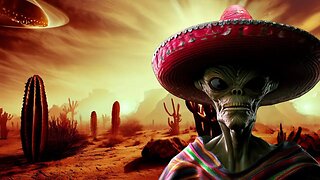Uncovering the Surprising Source Behind COVID 19 Testing Methods
It all started when microbiologist Thomas Brock was tramping through Yellowstone in the 1960s and stumbled upon a species of bacteria that would transform medical science. Brock was investigating the tiny lifeforms that managed to eke out a living in the superheated waters of the park's thermal pools. There, he and a student found golden mats of stringy growth in Yellowstone's mushroom spring containing a microbe that produces unusual heat-resistant enzymes. Today, those enzymes are a key component in polymerase chain reaction, or PCR, a method used widely in labs worldwide to study small samples of genetic material by making millions of copies. This technique, which would have been impossible without the discovery of heat-resistant bacteria more than half a century ago, is now being used to boost the signal of viruses in most of the available tests for COVID-19.
-
 4:17
4:17
MYSTERIOUSREALITIESNOW
1 year agoUnraveling Universe's Mysteries: Is This Alien Discovery Out of This World?
246 -
 1:01:59
1:01:59
In The Litter Box w/ Jewels & Catturd
23 hours agoMIA: Hurricane Helene Harris | In the Litter Box w/ Jewels & Catturd – Ep. 657 – 9/30/2024
50.4K25 -
 1:13:27
1:13:27
Lee Camp
4 hours agoLIVE: The US Fights To STOP Peace From Breaking Out (& much more)
28.6K -
 LIVE
LIVE
Film Threat
8 hours agoVERSUS: THE PENGUIN + MEGALOPOLIS | Film Threat Versus
493 watching -
 LIVE
LIVE
Revenge of the Cis
3 hours agoEpisode 1383: Emasculated
2,727 watching -
 6:39:54
6:39:54
LumpyPotatoX2
8 hours agoThrone & Liberty: Starring SirLumpy | Early Access - #RumbleGaming
36.4K5 -
 2:16
2:16
Chicks in the Office
3 hours agoWhy DWTS Won't Come Between Bachelor Nation's Joey & Kelsey
16.5K7 -
 3:03
3:03
GunBroker.com
12 days agoFeatures of the Colt Python and Colt Anaconda Revolvers | GunBroker
14.4K2 -
 59:19
59:19
Graham Allen
4 hours agoIn The HotSeat Episode 15: The “Border Czar”
26.4K19 -
 DVR
DVR
Right Side Broadcasting Network
20 hours agoLIVE REPLAY: President Trump Delivers Remarks to the Press in Valdosta, GA - 9/30/24
133K32